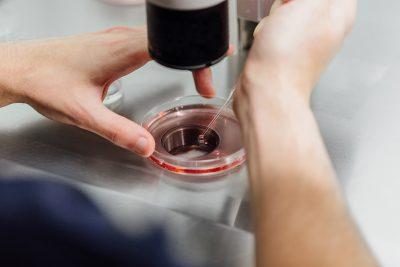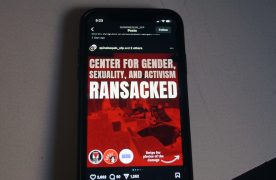As a child of a same-sex couple, I have become very used to explaining my family structure to a heteronormative world. I have two moms, zero fathers and very few peers who can directly relate.
Reflecting on our family, one of my moms once wrote in a journal entry she shared with me, “the whole formulation of a family was extremely important to me because I wanted to prove that same-sex couples could not only have long term happy relationships, but that we could parent children as well as anyone else.”
My two brothers and I are that proof.
When my mothers were navigating the process of having children, they decided to use artificial insemination. They had first heard about assisted reproductive technologies at an information workshop on options for same-sex couples to create families.
The process they then underwent was a long and arduous one.
First, they made a consultation appointment at a fertility clinic called Boston IVF. IVF stands for in-vitro fertilization: a type of artificial insemination involving fertilization outside of the body that usually takes place in a lab.
Assisted reproductive pathways are extremely expensive and often involve multiple attempts, none of which are guaranteed to bring results. My parents luckily had excellent health insurance at the time to cover most of the costs.
Then they took psychological screenings to make sure they understood the scientific and emotional aspects of the procedures to follow.
Next, they selected a sperm donor. Boston IVF has partnerships with sperm banks, and they provide a binder of donor profiles which include physical characteristics, genetic traits and personality traits.
Interestingly, the donor profile my moms ended up selecting is the reason that I am biracial. Both of my moms are Black, but my two siblings and I are half Indian.
After selecting a donor, it was time to embark on the trials. There are multiple types of artificial insemination. My moms started with the less expensive, low-technology procedures.
First was intracervical insemination, or ICI. Before the actual act of insemination, the mother who would be giving birth used an ovulation kit to predict when she would be most fertile. Meanwhile, the sperm donor’s sperm was frozen and tested for sperm count and sperm motility, meaning the amount of sperm and their ability to swim and move in the proper direction.
During ICI, a nurse practitioner uses a syringe with a catheter on the end of it and squirts it directly onto the cervix which mimics ejaculation.
Following three unsuccessful cycles of ICI, the doctors decided to conduct an x-ray and blood tests to examine my mom’s reproductive ability. She started taking a hormone called Clomid to help with egg maturity and increase the number of eggs released each month.
The next procedure they tried was intrauterine insemination, or IUI, in which the sperm cells are inserted directly into the uterus. Again, she did three cycles of this with no results.
Then they finally tried the most expensive and high-technology procedure — IVF.

A trial of IVF starts with a surgery during which eggs are harvested and placed into a petri dish. The sperm are introduced to the dish and hopefully, some eggs will be fertilized by the next day.
On the second day, doctors continued monitoring those fertilized eggs to see if they were dividing normally.
On the third day, my mothers had to decide how many of the fertilized eggs to implant in my mom’s uterus. Those eggs were inserted via a catheter with the hope that one will attach to the uterine lining and begin its growth.
On the third trial of IVF, two embryos ended up being viable and one of them survived. He is my older brother.
A year later, my parents wanted to have another child and they found out about a procedure called intracytoplasmic sperm injection, or ICSI, which involves inserting sperm cells directly into eggs. The same daily monitoring process ensued.
This time, they harvested 17 eggs and 13 of those were fertilized in the petri dish. Six of those were still alive on the second day. When it was time to implant, three viable embryos were left.
Of those three, two had heartbeats at the first ultrasound and they survived the whole pregnancy. They are my twin brother and me.
I have always been proud to be created in a lab because I think it’s a testament to how powerful technology can be. And even though only one of my mothers’ eggs and uterus were involved in our growth, our other mom’s tremendous love helped us to grow. They are both equally my mother.
Although artificial insemination was a long and tasking process for my parents, not everyone’s experience will be the same. It is just one of many options for people who may be wondering how they can start a family.











